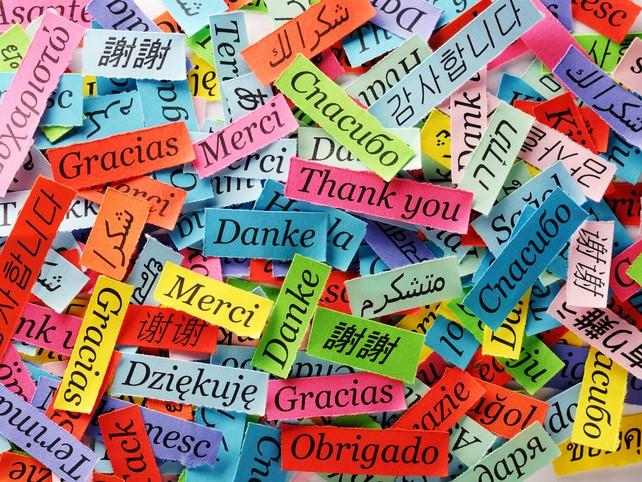
Introducing ‘translanguaging’ – and other ways to promote multilingualism

International universities are, by their very definition, multilingual – although you might not know it if you actually set foot in one. That’s because, worldwide, as universities further internationalisation ambitions, most classes are delivered in English. Such implementation of English-medium instruction (EMI) courses can lay the foundation for an oppressive pedagogy because there is an assumption that all students within these classrooms share the same level of English proficiency, which may not be the case for international students located in English-first-language countries or for home students in English-as-an-additional-language (EAL) countries.
To promote social justice and create more equity in such learning environments, future policies should be more inclusive of students’ multilingualism. One key way to do so in EMI settings is by making students aware that “translanguaging” is a credible learning tool for them to use.
Translanguaging refers to a bilingual or multilingual’s use of their full “linguistic repertoire” to bring about a learning outcome. Examples could include drafting written work in their first language initially, because this can make for deeper and more nuanced work, before translating to English later, or reading relevant books in their first language. Essentially, translanguaging can encompass any activity that empowers students to choose which language they use.
- What determines the success of an international branch campus?
- In support of international students’ journey through higher education
- Western universities need to look further afield or risk alienation
By making students aware that translanguaging is an inclusive part of the learning process, they will recognise that their first language has a “space” in this dynamic, which helps promote greater equality and inclusivity. Denying opportunities for students to use their first language would be like asking them to close one of their eyes permanently, forcing upon them a lack of clear perspective when it comes to their learning.
Giving more recognition to students’ multilingualism does not necessarily mean that instructors need to be multilingual. After all, it may be the case that in most EMI settings the only common language instructors and students share is English. And for this reason, students’ final work will be submitted in English. However, by giving recognition to students’ multilingualism, they are able to arrive at this final work using whichever language/s they choose. If for some reason instructors wish to cross-check non-English resources used by students in producing their work, this may be possible with the aid of translation software along with possible follow-up discussions with students to check on the accuracy of the translation.
A good way to start promoting students’ multilingualism is by conducting a needs analysis, which simply involves asking students questions to discover the linguistic challenges they encounter. For example, asking them to gauge the percentage of content they retain when English is the sole medium of instruction, or asking them for suggestions of how use of their first language could help their learning experiences.
The outcomes of this analysis could then involve instructors being more critically aware of how they need to adjust their pedagogy to accommodate the language needs of the EAL students in the intercultural classroom. They may, for instance, wish to use a student-centred learning approach, such as enquiry-based learning, which would provide room for students to bring their linguistic repertoires or heritage cultures as resources into the learning process.
There may also be an assumption by international students studying at universities in English-first-language countries that they are required to conduct their research in the English language. This assumption may be made because they are taught in English by a monolingual instructor, and the student therefore assumes that the examiners of their work may also be monolingual. In order for universities to become multilingual, spaces need to be provided for students to conduct research multilingually and they must be made aware of this possibility.
Expecting students to conduct research in English will lead to indigenous languages being further marginalised and to bodies of knowledge connected to these languages being overlooked. To overcome these likelihoods, students should be encouraged to access content knowledge from sources published in their original languages, which may well not be English.
The content knowledge contained within these other languages may often be rooted in the culture or nuance of the original language and not have an adequate English translation. By using and citing content from these sources, students may feel more included because their bilingual identities are being given more recognition. Students also need to be made aware that citing non-English written sources is a credible academic practice. EAL students should also be encouraged to publish in academic journals in their home countries in their native languages to help contribute to bodies of knowledge in their native cultures and thus help reduce the continued hegemonisation of the publishing industry. Instructors may wish to encourage this by making students aware of the potential to reach a different audience, not only linguistically but also in terms of nuance.
Promoting social justice in HE is not only a case of recognising multilingualism as a legitimate policy; it is also about allowing students the opportunity to question the status quo. In other words, students need to be given opportunities to critique the social structures that are often taken for granted.
Specifically, they need to be encouraged to question dominant global social narratives. For instance, in the case of a language course focusing on globalisation – and the ongoing need for the world to speak English – students should be encouraged to understand how this can be seen as a remnant of imperialism, how it results in local languages being marginalised and how that leads to bodies of knowledge rooted in those languages being overlooked and in some cases lost. Students should discuss possible alternative views so that they can draw their own conclusions – in turn, this will enable them to contribute to the decolonising agenda.
In sum, universities worldwide need to ask what the social justice goal of higher education is. An oft-heard answer to this is “to make students global citizens” – without any thought being given to the fact that this outcome often involves students’ cultural and linguistic backgrounds being dominated by global, English-language social narratives. Contrary to what so many universities currently practise, to truly pursue internationalisation they need to give their students’ diversity more prominence, particularly on the global stage. A first step towards this would be to embrace multilingualism as a legitimate policy for learning.
Dylan Williams is a teaching professor at Seoul National University, South Korea.
If you would like advice and insight from academics and university staff delivered direct to your inbox each week, sign up for the Campus newsletter.


